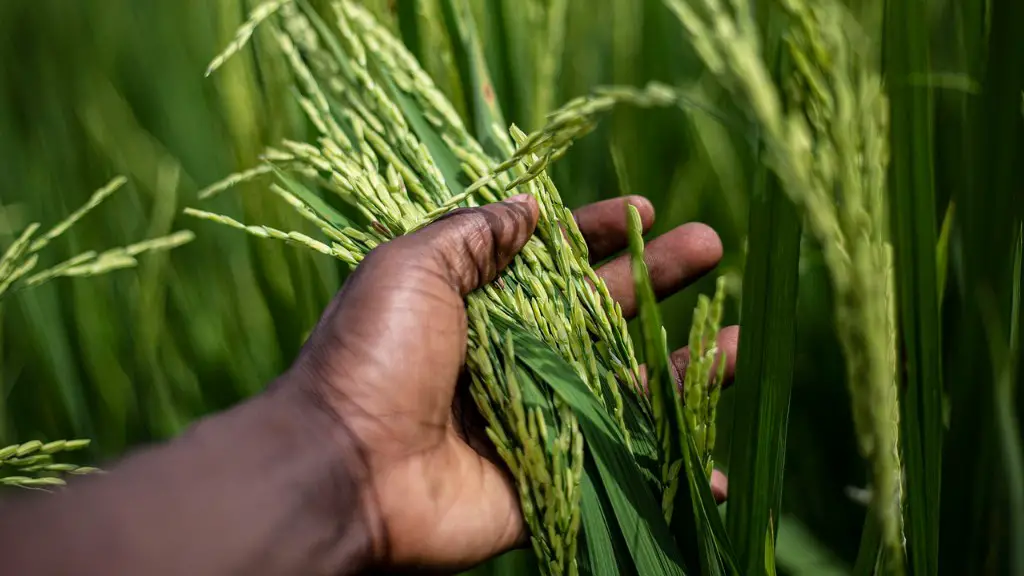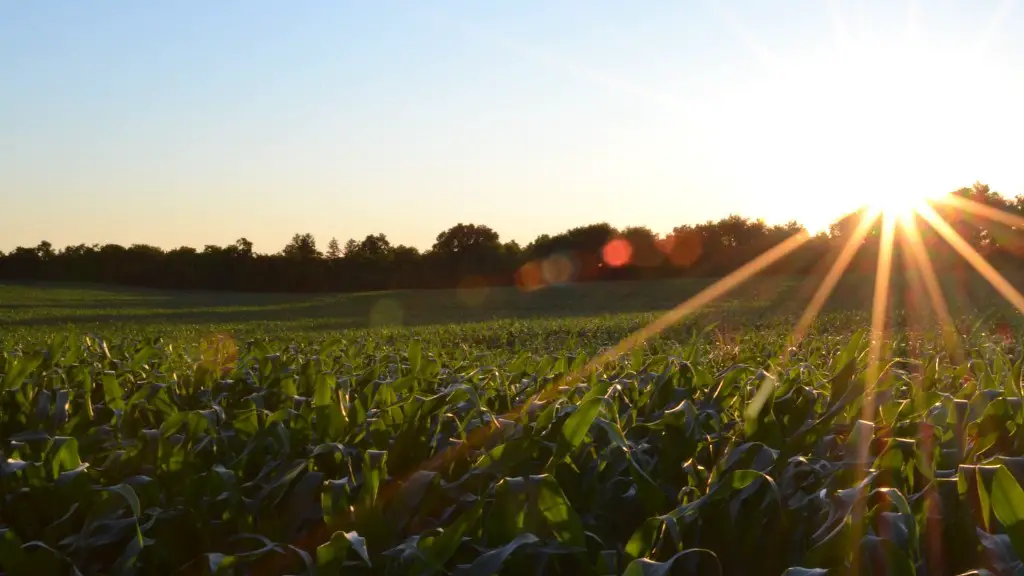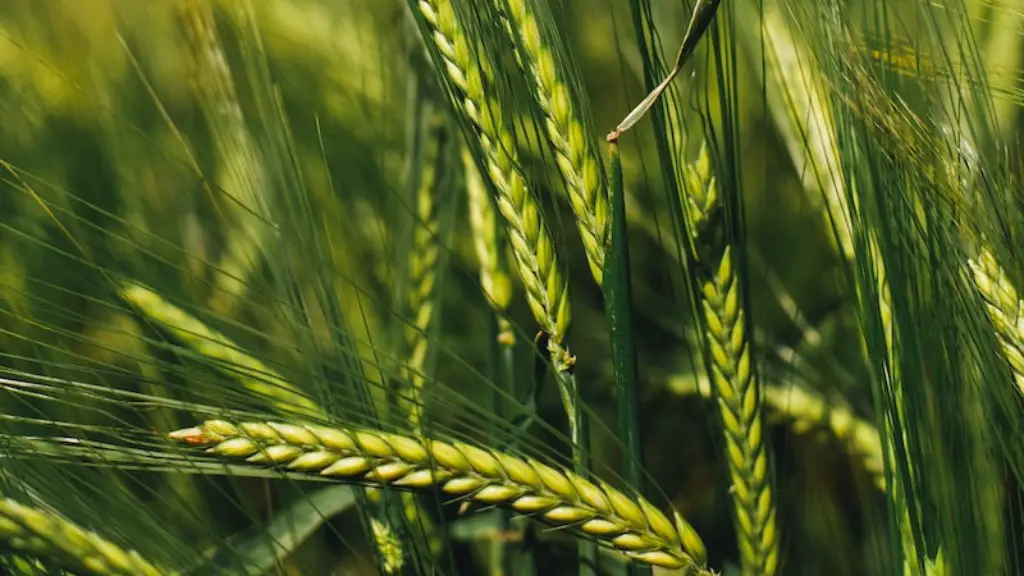Yield in agriculture refers to the quantity of product harvested per unit area of land. It includes crops, animals, and livestock. Yield is one of the most important factors in determining the success of agricultural production. Yields are usually measured in kilograms per hectare, metric tons per hectare, and percent of crop production relative to potential yield. Yields can be affected by many factors, such as climate, soil fertility, genetics, availability and use of inputs, pests, diseases, management practices, crop rotation, and soil and water conservation.
The yield of a crop is determined by the interaction of growing season, temperature, soil fertility and water availability. These factors are known as ‘yield limiting factors’ and determine how much of the crop can be harvested in a given year. High yields are possible when there is good growing season, adequate soil fertility, good water availability and limited pests and diseases. The crop genetics also play an important role in yield, as higher yielding cultivars have better yields than less advantageous varieties.
Yields can also be influenced by management practices such as fertiliser and irrigation application, crop rotation and tillage. Fertiliser application is the most common way to increase yield, as it supplies essential nutrients to plants. Irrigation management is also important in ensuring high yields, as it ensures adequate water availability to plants. Tillage is another important component of management and it helps to reduce soil compaction, improving aeration and water access to soil.
Yield management is a key component of agricultural production. It helps farmers to optimise their production to ensure maximum yield, while minimising waste and risk. Yield management techniques include crop rotation, soil fertility management, pest and disease management, and irrigation management. Yield management techniques can help farmers to increase their production, reduce costs and improve the efficiency of their operations.
Yields can also be maximised through improved genetic material and better management practices. Improved genetics will have higher yielding traits, while adopting improved management practices, such as nutrient and water management, can also lead to increased yields. Genetic improvement and better management practices can improve both the quantity and quality of crops, allowing farmers to generate higher yields.
Measurement of Yield
Yield is measured using a variety of different methods, such as per hectare of land, or as a percentage of potential yield. These methods can help to provide an estimate of a crop’s performance, and yield can also be compared between different types of crops and farms. This provides a way for farmers to assess and compare the performance of their crops, and to identify areas for improvement.
Yields can also be improved through the use of modern technology, such as crop sensing and remote sensing. This technology can be used to assess soil fertility, water availability and pest and disease outbreak. It can help farmers monitor the development of their crops, and detect potential areas of improvement. This data can then be used to develop management strategies that can help to improve yields.
Environmental Factors Affecting Yield
Environmental factors also play an important role in determining crop yields. Climate, soil fertility, and water availability are key environmental factors that can have a significant effect on yield. Changes in climate can lead to changes in the timing and intensity of crop growth and weather outbreaks can have a direct impact on yield, while soil fertility and water availability can both have an indirect effect on yield.
Climate change is expected to have a significant impact on global crop yields in the future. Increased temperature and changes in precipitation patterns are likely to have a direct effect on yields. Soil degradation, caused by over-cropping, poor soil management and pollution, is also expected to have a detrimental effect on yields. As a result, sustainable land management practices and improved crop genetics will become increasingly important for ensure high yields in the future.
Economic Factors Affecting Yield
Price is another economic factor that can have an affect on yield. Low commodity prices lead to reducing demand, which can have a direct impact on yield. High production costs, such as those associated with inputs and labour, can also lead to lower yields. As such, economic strategies need to be employed to ensure that production is profitable and yields are maximised.
Government policies can also affect yields. agricultural subsidies can provide a level of financial security for farmers, but can also be an incentive for farmers to increase their production, leading to more land being used for agricultural production and ultimately to a reduction in crop yields. Global trade can also affect yield, as an increase in imports can lead to more competition for domestic producers and a decline in domestic yields.
Efficiency of Yield
Efficiency of yield is an important measure of the success of a production system. Efficiency of yield can be measured in terms of crop water use, nutrient input and the amount of biological resources available. Efficiency of yield is an important consideration for growers, as low efficiencies can lead to higher costs and lower profits. Improving efficiency is possible through the use of new technologies, such as precision agriculture and remote sensing.
The use of precision agriculture allows farmers to precisely target and measure inputs to a crop, resulting in better yields and higher efficiency. Remote sensing can be used to measure soil moisture levels, water availability, nutrients and pests and diseases. This can allow for timely and accurate decisions to be made regarding crop management, leading to better yields.
Yield is an important measure in the success of agricultural production. While yields are determined by a variety of factors, improved genetic material, better management practices and modern technology can all be used to improve yield. In addition, government policies and economic factors must also be taken into account in order to ensure that agricultural production is efficient and profitable.



